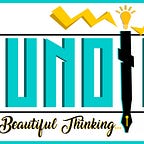Could Emojis Be A Bridge To Clarity?
Justice Peter Jackson recently made a bold move in the legal circles by using emojis to pass a judgement. The case in question was regarding a Muslim British man who tried to take his four biological children to Syria. They were stopped in Turkey. In an attempt to explain to the children, (both who were 10 and 12) he made do with emojis to explain to them clearly why they would have limited contact with their father instead of passing an obtuse judgement with more Latin jargon per unit area than the number of doping athletes in the tour de France every year. This incident makes one wonder, could emojis be the bridge to connecting everyone and everything?
Ludwig Josef Johann Wittgenstein was a German thinker who was regarded as the greatest German thinker since Kant, which is saying a lot considering the fact that Kant was a man whose whole philosophy was more confounding than the ending of the movie ‘Inception.’ He published one book in his life ‘Tractatus Logico-Philosophicus’ which, in his opinion, solved every question worth asking in philosophy. After this cheeky display of intellectual superiority, the gentleman spent his time teaching as an elementary school professor in Vienna before eventually coming back to the academic circles. One of the interesting ideas he tries to explore in his book is that of the ‘picture theory.’ He argues that there is a gap between what can be said and what can be shown through images. Statements become meaningful only when they can be pictured. The gap in this is the gap in logic and therefore the cause of confusion. To put it into mundane terms, think that you go for a holiday to Nepal and see Mount Everest. You come back to India and tell your friend who lives in the desert in detail about what you saw. When you describe Mount Everest to her, she will construe an image in her head from her limited understanding of ice-laden mountains from images she might have seen. This gap does not allow the sense of wonder you felt to be experienced by her. This is what Wittenberg talked about. This conversation could go into unbelievable depth about what logic is but we will not go there. However, even at this superficial level, the idea is still captivating.
The emoji seems to bring this seminal idea to our daily lives. Think about it, the Oxford word of the year for 2015 was ‘Face with tears of joy.’ Excusing ourselves to take this claim seriously for a minute, this idea is powerful. Imagine a symbol that is universally unambiguous and which cannot be misconstrued. It is very clearly a mental image of what we feel and projects it to others. In the future, we could have more images removing the ambiguity brought about by the difference in the usage of words. Take for instance, the very act of initiating conversation with a person online. You have a plethora of choices between Hi, Hey, Yo, Hello, the name of the person etc. How you use them impacts how you wish to converse with that person and how the person perceives the conversation. Imagine your crush sends you a ‘Hey!’ You may be misguided to think that it is flirty in nature, while it could just be her way of being friendly when making conversation before asking for tomorrow’s assignment. A emoji would make things less ambiguous, since one would know whether it’s a flying kiss or a simple greeting.
Our shared understanding of messages as they have been thought of might bring a society that understands every member better. Each person uses the number and type of emoji differently and interpreting them could be hard. One person may use emojis recklessly while for the other the number used impacts the meaning of the message.
Nonetheless, as much as one may find them repulsive, emojis might just be a bridge which can help connect what has been said and what was meant.
- Aditya Kovvali
